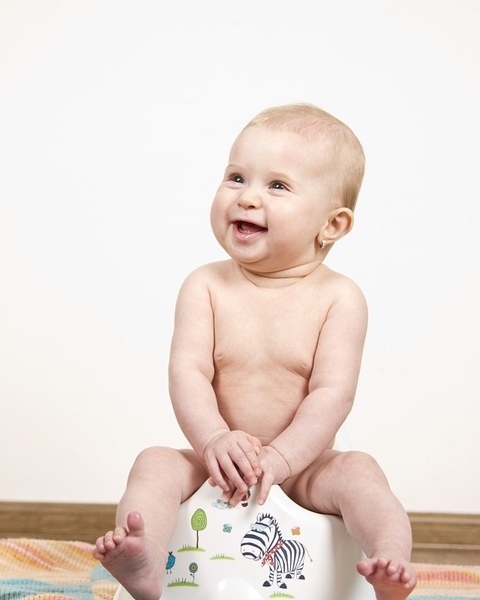
Ways To Potty Train A Child
23 Feb 2018 | 4 min Read
Babychakra
Author | 1369 Articles
Potty training your child, especially the first one, can be one of the greatest challenges for a parent.

After all, diaper changing is the not-so-awesome part of becoming a parent and parents eagerly look forward to the day when their little one has become fully potty trained.
Beginning potty training at the right time is essential to ensure a quick and pleasant potty training experience. How to potty train is as important as when to potty train. Your child should be able to understand the urge and should be able to communicate the feeling to you.
What is the right potty training age for your toddler?
The right potty training age for any child depends not on the chronological age of the child, but on his or her developmental milestones. Some children are ready to be potty trained between 18 to 24 months of age whereas others may not be ready up to even 3 years. Girls are generally ready to be potty trained earlier than boys.
Signs of readiness for potty training your child:

Look out for these signs given by your child that indicate his or her potty training readiness:
- Clutching at his or her diaper when she wants to pass stool or urine.
- Going to another room or under the table or some quite place when she or he is urinating or having a bowel movement.
- Staying dry for two or more hours at a time and/or staying dry after waking up from a nap.
- Feeling uncomfortable in soiled clothes and asking you to change them.
- Resisting wearing a diaper and asking to wear underclothes like big boys or girls.
- Being able to walk up to or crawl up to the toilet seat and pull down his or her pants.
How to give potty training?
- The big reveal: Bring out the potty chair and encourage your child to sit on it with clothes on. Dispose off the contents of a soiled diaper on the potty chair to indicate its purpose.
- Time it right: Most children have a fixed time when they have a bowel movement. Encourage your child to sit on the potty chair during this time, but allow him or her to get up if they want to.
- Keep them busy: Read a book to your child or give a toy to play with when they are on the toilet training seat. Encourage your child to use the toilet seat and praise them when they are successful.
- On high alert: Be on the alert during their regular bowel time and get your child on the toilet seat as soon they show the need. Be quick and drop everything both of you are doing. Consistently reaching the toilet training chair on time will establish its purpose clearly. Praise your child for indicating the urge to you.
- Hygiene: Teach girls to always wash or wipe themselves from the front to the back. This ensures that no fecal matter enters their vagina and protects them from vaginal infections.
- Wash and dry: Educate yourself and your child about the importance and the correct method of washing hands after every single bowel movement and after passing urine. Many childhood infections and illnesses can be prevented simply by the single act of properly washing hands.
Potty training is an important milestone for your child and it develops a sense of self-control over one’s own body. One of the most important potty training tips is that if your child is not willing to get potty trained, then take a break for a few weeks. Try again with lots of encouragement and do not let it turn into a battle or a contest of wills.
Disclaimer: The information in the article is not intended or implied to be a substitute for professional medical advice, diagnosis or treatment. Always seek the advice of your doctor.
Also read: Oopsie Poopsie! Sumira’s Hilarious Story of Surviving the Poop Onslaught!
A


Related Topics for you
Suggestions offered by doctors on BabyChakra are of advisory nature i.e., for educational and informational purposes only. Content posted on, created for, or compiled by BabyChakra is not intended or designed to replace your doctor's independent judgment about any symptom, condition, or the appropriateness or risks of a procedure or treatment for a given person.
